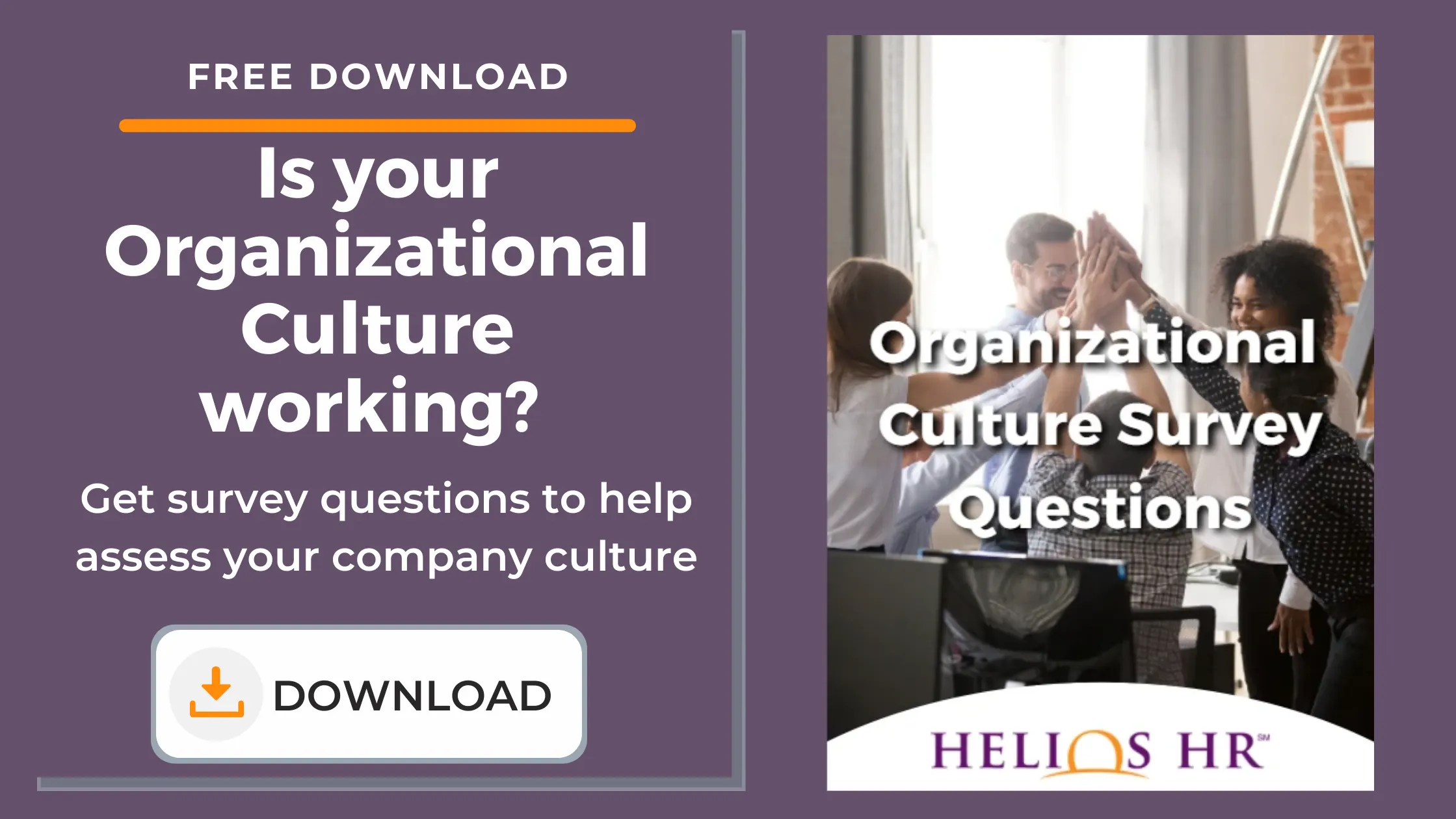By: Ber Leary on October 22nd, 2021
5 Ways That Leaders Can Boost Positive Cultural Change
You can tell when a company has a great culture. There's an unmistakable buzz in the office, as an energized group of people work together to do amazing things. Everybody just clicks.
Similarly, you can tell when there's something wrong in a culture. It shows up in the stats: low engagement, high staff turnover, poor scores on employee feedback surveys.
The frustrating thing about organizational culture is that it’s often out of your hands. Culture doesn't come from above; it emerges naturally from within. It’s defined by the behaviors and beliefs of your people – what they do, what they focus on, and how they treat each other. You can’t always control that.
But you can guide it. Let’s take a look at the kind of high-level interventions that can result in a great culture.
First of all, what does it mean to have a positive culture?
A positive culture is one that supports, encourages and complements everyone on your team.
A positive culture is one that supports, encourages and complements everyone on your team. Because no two teams are the same, this means that positive cultures can look different between organizations.
Each organization has its own optimal culture that’s slightly different from everyone else. For instance, a tech start-up might have a culture that prizes independence and flexibility, as per the “move fast and break things” philosophy that helped Facebook achieve rapid success.
But in a different environment, such as a law firm or compliance team, you absolutely do not want people to “move fast and break things”. You want them to move carefully and avoid mistakes.
Before you start working on your culture, you have to know what kind of culture suits your team. What kind of environment allows them to work to the best of their abilities while focusing on your strategic goals? Once you understand this, you’ll know what kind of culture to aim for.
You can tell if you need a cultural change by looking at your stats. Studies have found that toxic cultures can lead to the following negative outcomes:
- Medical costs increase by 50%
- Workplace accidents rise by 49%
- Absenteeism rises by 37%
- Errors and rework go up by 60%
- Staff turnover increase by 50%
If any of these metrics are a concern at your company, then you may need urgent cultural change.
5 leadership interventions that can drive cultural change
Cultural change is not as easy as calling your team into a meeting and saying, “here is our new culture.” You can try, but you'll soon discover that culture is a product of the working environment.
But you can define that environment. If you make the right changes and pay attention to the outcomes, you can guide your team towards your desired culture. Here are a few methods that work in any professional environment.
1. Rewrite your company’s constitution
The U.S. Constitution defines American culture, and workplace policies define your organizational culture. These policies are found in your documents, such as the employee handbook, policy statements, and managerial guidelines. Your first step is to review these documents and ask: are we highlighting the right things? If these policies don’t align with your goals, then it’s time to rewrite your policies.
It’s also important to ask if you’ve omitted anything from the documents. For example, DEI policies and anti-harassment rules can sometimes exclude certain problematic behaviors. Without the appropriate rules in place, you may be giving people a green light to create a toxic work environment. Work with HR experts and local teams to ensure that you have covered all angles.
2. Put your purpose front-and-center
According to a Gallup poll, only 36% of employees report being fully engaged at work. One of the prime reasons for this is a lack of why. Why am I working on this task? Why does the organization focus on this outcome? Why do I feel like we’re always putting out fires, rather than moving forward?
Purposeful leadership can result in higher engagement and a more cohesive culture. To achieve this, you’ll need to put your organization’s purpose at the heart of everything you do. Make sure that you have clarity about your purpose, and that this purpose is aligned with your goals and strategy. When your people understand why their work is important, it will bring them together as a team.
3. Set the model for team communication
Employees take their behavioral cues from above – even if they don’t realize it. If leaders are supportive, employees are more likely to help their colleagues. If leaders are transparent and accountable, employees will take more responsibility for their own actions.
Changing a leader’s personal communication style can take some work. In some cases, leaders might consider hiring an executive coach to help them learn to communicate in a way that aligns with cultural values. Doing this is worth the investment – once the people at the top start communicating well, the rest of the team will soon start to emulate them.
4. Be brave about what's driving your need for cultural change
When you attempt to lead cultural change, you may face a lot of resistance. People across the organization may have to rethink their beliefs and behaviors, which can lead to difficult conversations like:
- Have I been focusing on the wrong things?
- Is my communication style inappropriate?
- Am I not transparent enough?
- Am I not accountable enough?
- Do I need to rethink the way I treat the people around me?
Sometimes, the people asking these questions will be at the top of the organization. It takes courage to admit that you could improve your work style. It takes even more courage to go to a senior leader and talk about their style. But by being honest and courageous about what has been going wrong, you open the door to so many other things going right.
5. Treat employee feedback like treasure
Nobody understands your culture like your team. They are the ones living in it every day. They are your richest source of data for any cultural analysis. Talk to them, run regular surveys, and use this information to identify areas for improvement.
Remember though that employees will only talk openly if they trust you. In a toxic environment, they might not open up. You can work around this in the short term by offering fully anonymous online surveys. If employees see that you are committed to genuine change, they will start to feel more comfortable about getting involved.
Recommended reading: How to Build a Thriving Organizational Culture
Expert HR support can help your culture thrive
These actions can help to improve your culture, but often you need to dig deeper. Issues like compensation, employee experience, and DEI can all make or break your culture. Plus, of course, you need to make sure that everyone you hire is a good culture fit.
Why not bring in expert help and get things right? Helios HR have over 20 years of experience in helping companies build thriving, positive cultures. Book a no-obligation consultation call today and find out how Helios HR can help you deliver your strategy.





